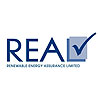Rainwater Harvesting
- Rainwater Harvesting
- Rainwater Harvesting FAQ
A Rainwater Harvesting System can be installed in a house to reduce mains water usage and
maintain water supplies in periods of drought.
 Rainwater Harvesting
Rainwater Harvesting
If rainwater is required only for the garden and car washing, the simplest solution is to connect water butts to existing rainwater pipes. If there is surplus rainwater, it can be used in the home for non-drinking purposes, like flushing toilets and to fill a washing machine.
Rainwater Harvesting - Water Meters
Most UK households pay their water and sewerage charges as part of their Community Charge. In order to save money on water supply, it is advisable to contact the water company and arrange to have a water meter fitted. A water meter allows water usage to be monitored and for periodic checks to be made for leaks in the system.
Rainwater Harvesting - Purification
It is possible to replace all the home's water requirements with rainwater harvesting, as long as a purification system is installed in the system. If the house already has a mains supply of drinking water then a purification system is unlikely to be cost effective.
Take Other Measures Before Installing Rainwater Harvesting
Before investing money in rainwater harvesting initiatives, it is advisable to take simpler water conservation measures first.
Rainwater Harvesting System Design
Rainwater harvesting is a specialised field so when considering an installation it is advisable to takes the advice of a competent installer. The rainwater harvesting system must be designed so that the supply of rain water meets the demand. Rainfall is intermittant so it will be necessary to store enough rainwater to avoid running out in dry spells.
Rainwater Harvesting - Back-up Water Supply
It is usual to install a back-up mains supply that will operate automatically when the underground storage tank runs low. The control system is programmed to fill the storage tank from the mains when there is insufficient rainwater available.
Rainwater Harvesting - Collection Surface
Most pitched roofs provide a suitable rainwater catchment area and the existing rainwater pipes and gutters will act as the harvesting system. It is preferable to collect the rainwater that falls onto a house roof.
Rainwater harvested from the ground is more problematical as it is likely to be contaminated and will require additional cleaning. However, contamination may not be a problem if the rainwater is only used for garden watering.
Rainwater Harvesting - Water Filters
Simple filtration, without any disinfectant, is sufficient to allow rainwater to be used for flushing toilets. Filters can be positioned on the rainwater pipes or on the inlet to the underground tank, depending which option is the most economical. The efficiency of a typical rainwater pipe filter is 95 per cent when clean but will fall below 30 per cent efficiency if it is not cleaned regularly.
Rainwater Harvesting Storage Tanks
Storage tanks for rainwater harvesting should be of the same design as those used for storing mains drinking water. Where possible, tanks are best situated underground as lower light and temperature levels will reduce bacteria growth.
Rainwater Harvesting Pumps and Controls
A pump will be required to lift the stored rainwater from the underground tank to the header tank in the roof. Pre-primed, submersible pumps are most commonly used as they are efficient and quiet. The size of pump will be determined by the height the water has to be pumped. A system of controls will be required to ensure that the pump does not operate when there is no water in the tank.
Avoiding Contamination of the Mains Water Supply
Under the Water Supply (Water Fittings) Regulations 1999, various degrees of precaution must be taken against possible contamination of the mains drinking water. It is essential that precautions are taken to prevent the untreated rain water contaminating the mains drinking water system. Pipes and supply points on the rainwater harvesting system must be clearly labelled in order to avoid confusion with the mains drinking water.
 Rainwater Harvesting
Rainwater HarvestingIf rainwater is required only for the garden and car washing, the simplest solution is to connect water butts to existing rainwater pipes. If there is surplus rainwater, it can be used in the home for non-drinking purposes, like flushing toilets and to fill a washing machine.
Rainwater Harvesting - Water Meters
Most UK households pay their water and sewerage charges as part of their Community Charge. In order to save money on water supply, it is advisable to contact the water company and arrange to have a water meter fitted. A water meter allows water usage to be monitored and for periodic checks to be made for leaks in the system.
Rainwater Harvesting - Purification
It is possible to replace all the home's water requirements with rainwater harvesting, as long as a purification system is installed in the system. If the house already has a mains supply of drinking water then a purification system is unlikely to be cost effective.
Take Other Measures Before Installing Rainwater Harvesting
Before investing money in rainwater harvesting initiatives, it is advisable to take simpler water conservation measures first.
Rainwater Harvesting System Design
Rainwater harvesting is a specialised field so when considering an installation it is advisable to takes the advice of a competent installer. The rainwater harvesting system must be designed so that the supply of rain water meets the demand. Rainfall is intermittant so it will be necessary to store enough rainwater to avoid running out in dry spells.
Rainwater Harvesting - Back-up Water Supply
It is usual to install a back-up mains supply that will operate automatically when the underground storage tank runs low. The control system is programmed to fill the storage tank from the mains when there is insufficient rainwater available.
Rainwater Harvesting - Collection Surface
Most pitched roofs provide a suitable rainwater catchment area and the existing rainwater pipes and gutters will act as the harvesting system. It is preferable to collect the rainwater that falls onto a house roof.
Rainwater harvested from the ground is more problematical as it is likely to be contaminated and will require additional cleaning. However, contamination may not be a problem if the rainwater is only used for garden watering.
Rainwater Harvesting - Water Filters
Simple filtration, without any disinfectant, is sufficient to allow rainwater to be used for flushing toilets. Filters can be positioned on the rainwater pipes or on the inlet to the underground tank, depending which option is the most economical. The efficiency of a typical rainwater pipe filter is 95 per cent when clean but will fall below 30 per cent efficiency if it is not cleaned regularly.
Rainwater Harvesting Storage Tanks
Storage tanks for rainwater harvesting should be of the same design as those used for storing mains drinking water. Where possible, tanks are best situated underground as lower light and temperature levels will reduce bacteria growth.
Rainwater Harvesting Pumps and Controls
A pump will be required to lift the stored rainwater from the underground tank to the header tank in the roof. Pre-primed, submersible pumps are most commonly used as they are efficient and quiet. The size of pump will be determined by the height the water has to be pumped. A system of controls will be required to ensure that the pump does not operate when there is no water in the tank.
Avoiding Contamination of the Mains Water Supply
Under the Water Supply (Water Fittings) Regulations 1999, various degrees of precaution must be taken against possible contamination of the mains drinking water. It is essential that precautions are taken to prevent the untreated rain water contaminating the mains drinking water system. Pipes and supply points on the rainwater harvesting system must be clearly labelled in order to avoid confusion with the mains drinking water.











